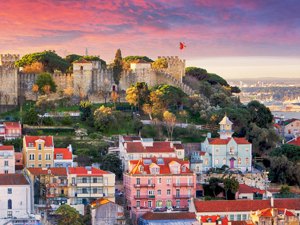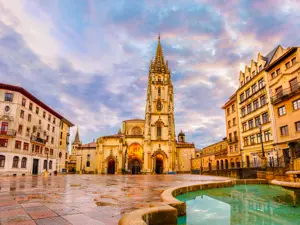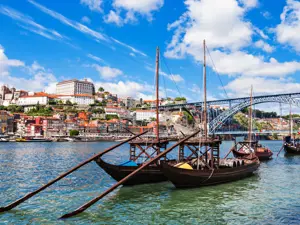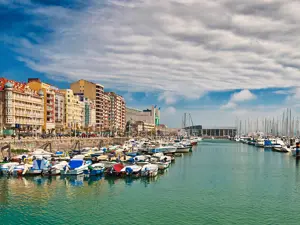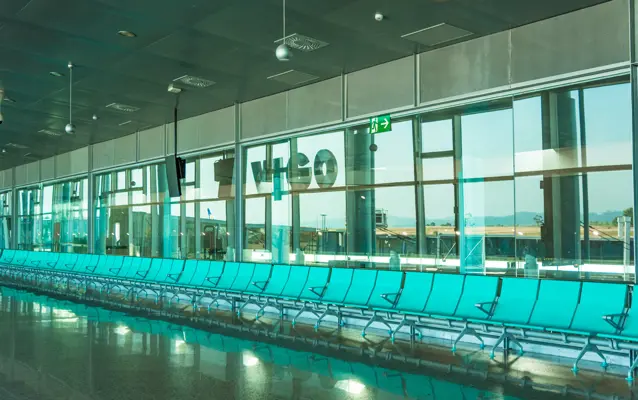One of the most surprising tourist destinations of Spain.
Vigo is a city that leaves no visitor indifferent. There are many attractions offered by this wonderful city located in the south-east of Galicia, and not just from a naturalistic point of view: endless beaches, rolling hills, immense parks, always mild temperatures and wonderful surroundings, as well as a buzzing lifestyle and attractive pedestrian areas filled with interesting shops and monuments.
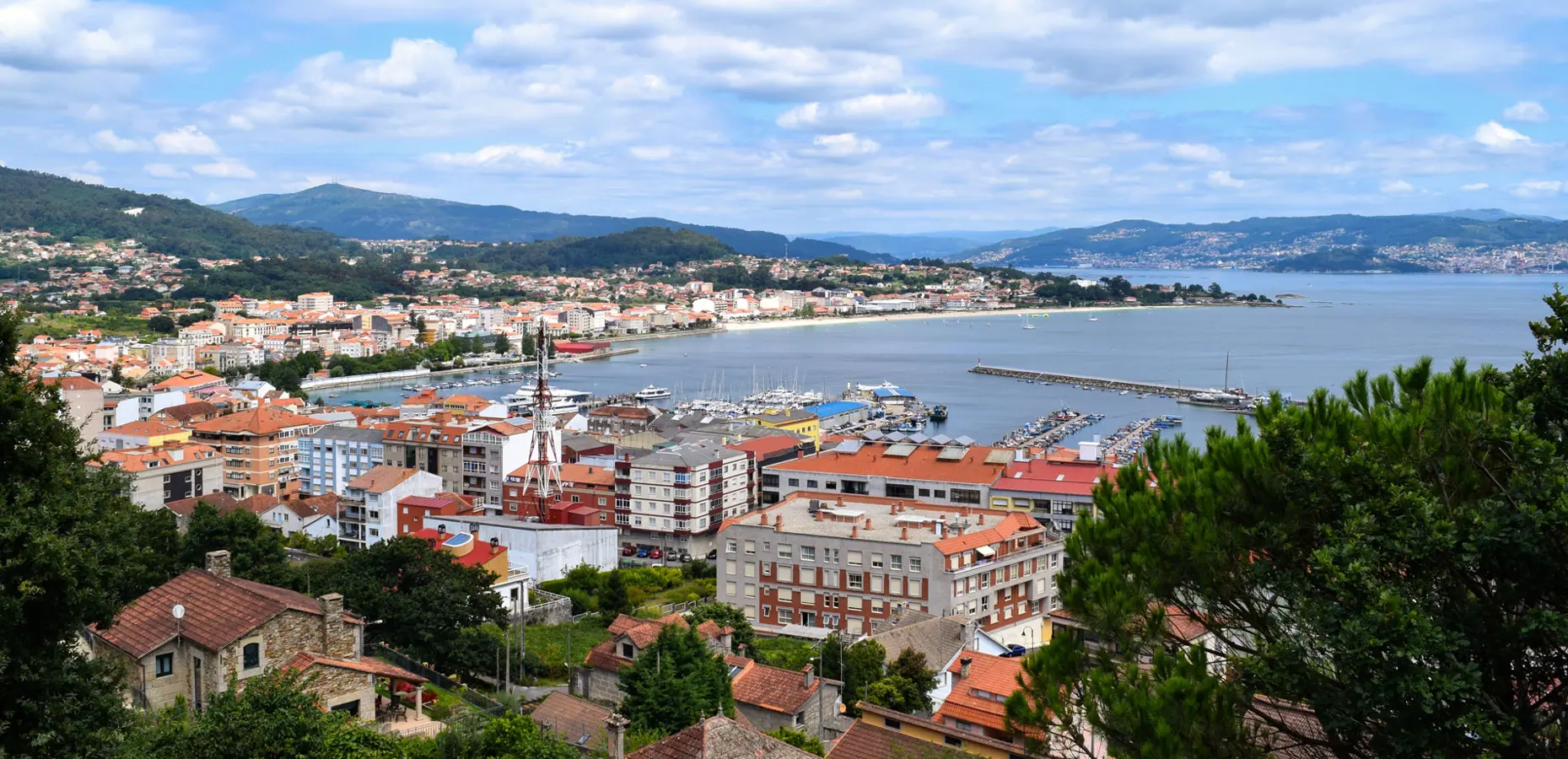
The city of Vigo is divided into various districts, an almost unique feature in Spain. Developed between the XIX and XX centuries, its old town has remained almost separate from the so-called ensanche, the urban expansion of small towns and villages that surround it, which are joined to the old town by the imposing Porta do Sol. In fact, it is said that Vigo is made of many Vigos.
Today Vigo is a clever combination of historic traditions and modern activities, particularly in the area of fishing and the preservation of fish, since it grew and developed as a city thanks to its port, one of the largest in the world for leisure boating, but also for sea-fishing activities. Don’t miss a visit to the Estuary, a paradise of nature and well-being on the Atlantic Ocean, and the Cies Islands, which protect the land from the ocean and calm the waters.
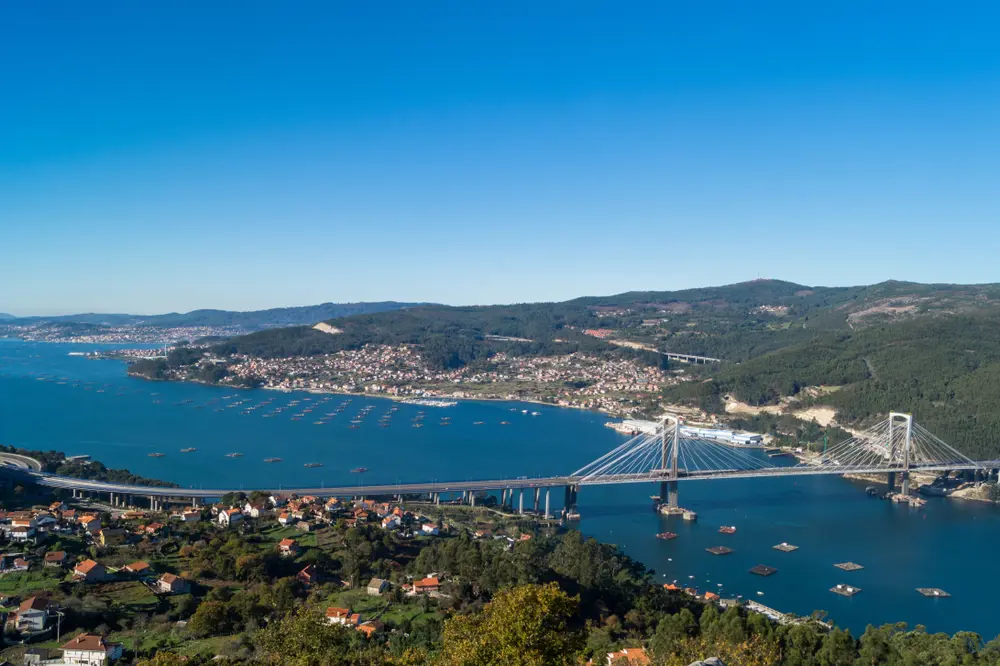
The bay of Vigo
Galician food
The streets of Vigo are dotted with craft shops and restaurants where you can enjoy delicious Galician food made with the flavours of the sea, such as octopus, sardines, crabs and mussels. Principe Street is the most important street for fashion, but Calle de las Ostras or Oyster Street is truly unique, offering oysters which are sold and freshly shucked by skilful vendors. In Rua Cesteiros, instead, basket weavers make wicker baskets, an age-old tradition in Vigo. The centre of Vigo is also known as the 'golden mile of art' for its high concentration of art foundations, important galleries and antique shops.
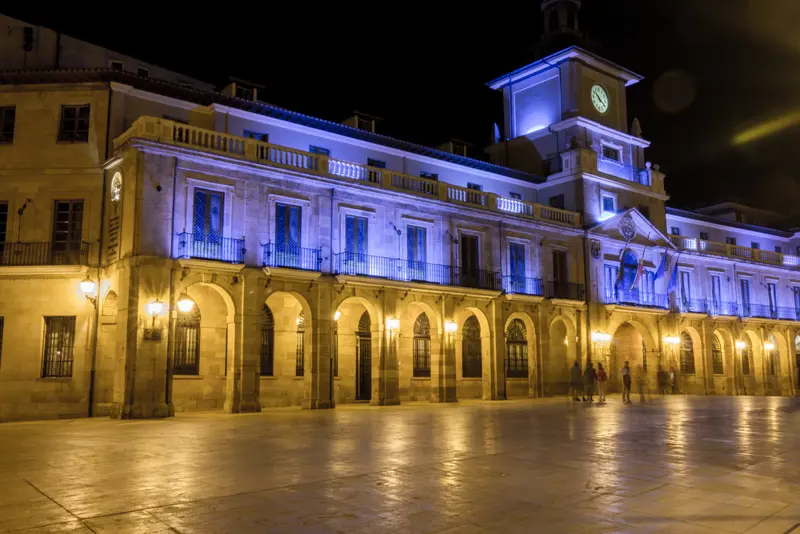
The city center of Vigo illuminated in the evening
The centre of Vigo
The centre of Vigo is also known as the 'golden mile of art' for its high concentration of art foundations, important galleries and antique shops.
One of the most important of the many museums is MARCO, the Museum of Contemporary Art, but also interesting are the Galician Museum of the Sea, the House of the Arts and the Afundación Cultural Centre, which is housed in a Modernist style building, an architectural symbol of Vigo. Lastly the Cathedral, or Church of Santa Maria, popularly known as “La Colegiata”, is one of the most beautiful examples of religious architecture in the city.
Vigo is an ideal city for strolling, and in the heart of the old town Principe Street leads to one of the many open-air markets, examples of which are O Calvario, in the district of Lavadores, where you can buy anything from fruit to clothing and fashion accessories created by Galician designers, and the very popular Fish Market, which is well worth a visit.
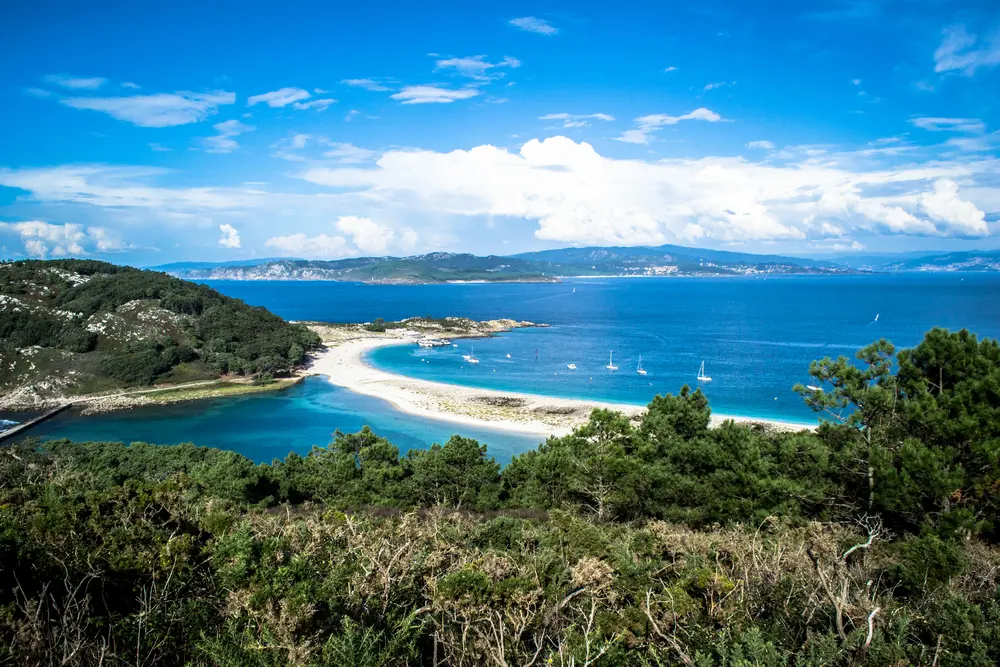
The beach of Rodas.
The parks
A special trip should be reserved to the parks of Vigo, each with unique features, such as Alameda Park, with its unusual stone zoo, the Sales Foundation, with exotic flora, or overlooking the sea, the A Guía mountain; a truly unique spectacle is offered by the Atlantic Islands of Galicia National Park. The Cies Archipelago is made up of three islands: Monte Agudo, O Faro and San Martiño, the first two being connected by a long strip of sand, known as Rodas Beach.
There are numerous interesting events that take place throughout the year. One of the most important is La Reconquista, which takes place every 28th March and lasts three days, and celebrates Spanish liberation from Napoleon’s army in 1809; at this event people dress up in period costumes and re-enact battles with traditional weapons. Another significant event is the Carnival or Entroido, which each year attracts thousands of tourists with its thoroughly Spanish traditions.
Text by Anna Glik
Photos: Sisterscom.com, Shutterstock
Video: www.turismodevigo.org
Copyright © Sisterscom.com
Published June 2018
Tourism Board
www.turismodevigo.org
www.spain.info
Where to sleep in Vigo
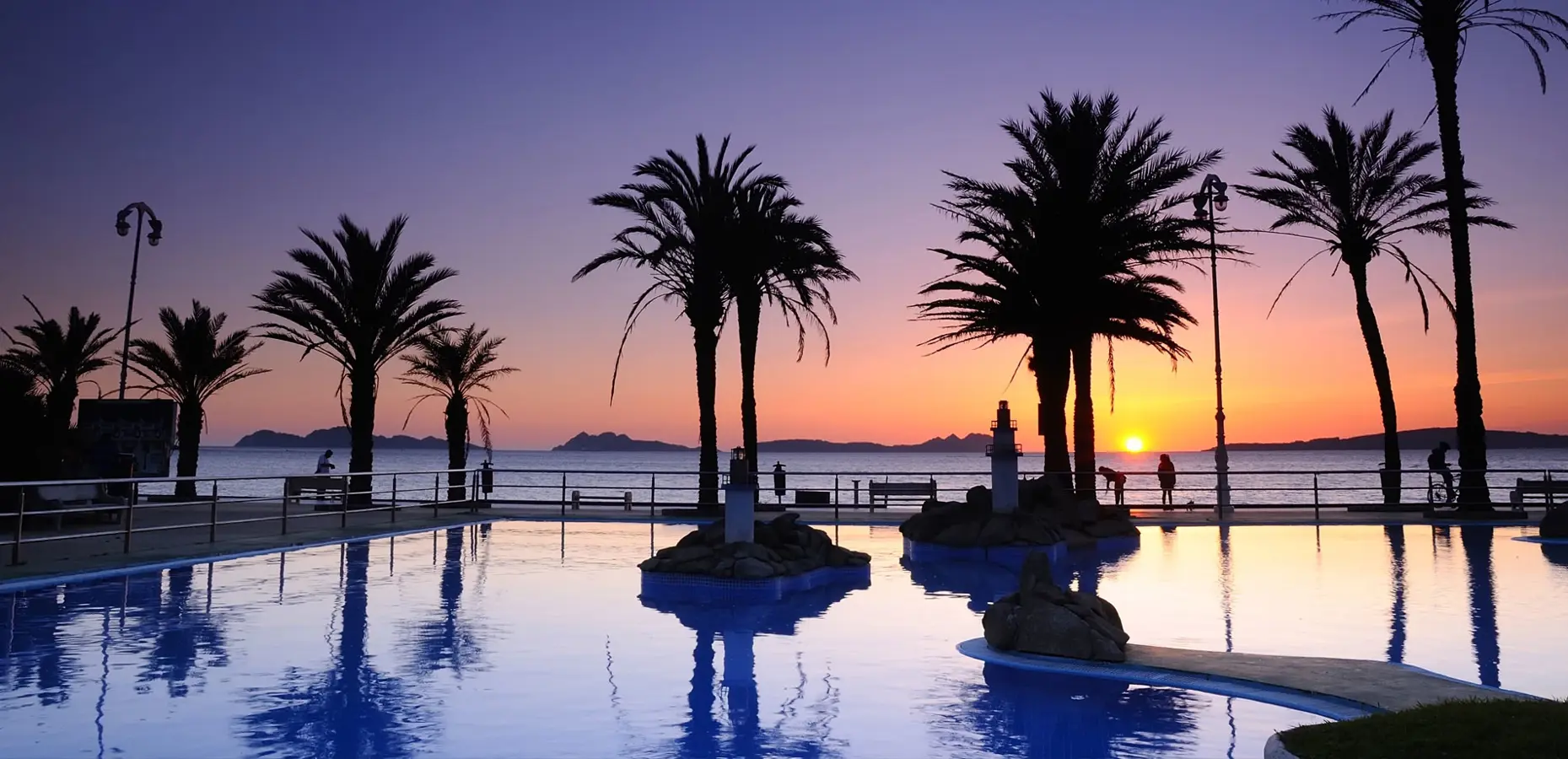
Vigo is a welcoming city and offers different possibilities for accommodation.
To find the ideal hotel and the best offers you can do a search for the stars but also for districts or landmarks.
DISTRICTS
Hotels in the districts
LANDMARKS
WHERE TO GO
Monuments
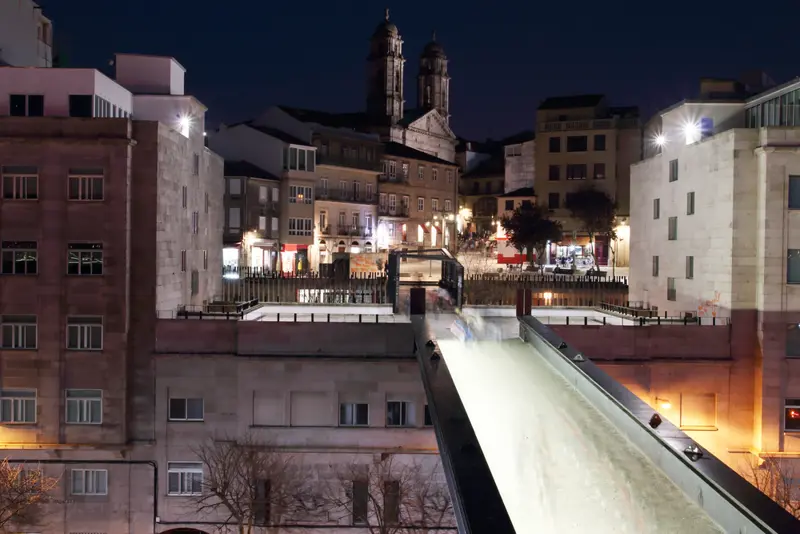 CATHEDRAL OF SANTA MARIA
CATHEDRAL OF SANTA MARIAThis is a beautiful example of Galician Gothic style, with two Baroque towers and three naves. Inside it houses the statue of Cristo de la Victoria (Christ of Victory), which is believed to be miraculous for having helped the inhabitants win the definitive battle against the French. The statue is solemnly carried in procession on the first Sunday of August, together with thousands of worshippers who arrive from all over Spain.
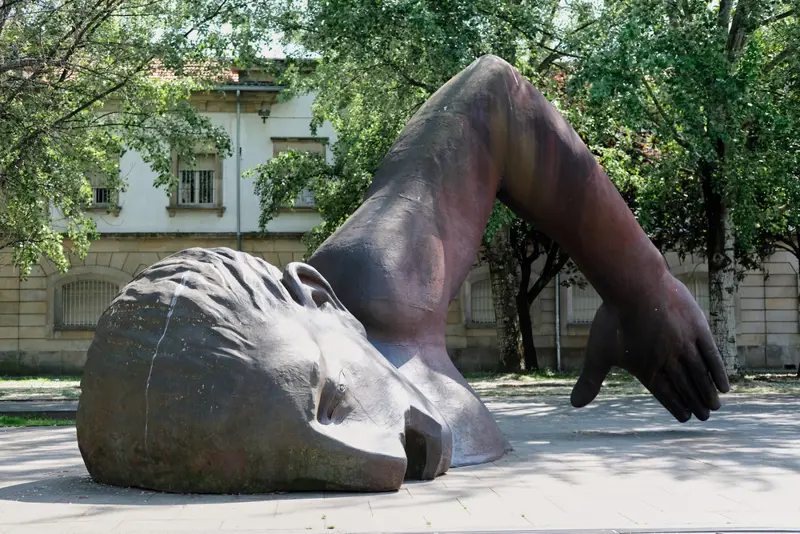 STATUES
STATUESThe city of Vigo is full of monuments throughout its streets and statues dedicated to all types of personalities: La Puerta del Atlántico (The Gate to the Atlantic) is dedicated to the emigrants of Vigo who left for the Americas; the Monument to the Fisherman pays homage to the city’s main activity; La Farola (the Streetlight); the Triton; El nadador (the Swimmer); El sireno (The Merman), a bronze statue and symbol of Vigo which depicts a man-fish looking toward the Atlantic Sea and is set above two columns of polished granite, and lastly the statue dedicated to Jules Verne, who mentioned Vigo in his famous novel “Twenty Thousand Leagues Under the Sea”.
Museums
GALICIAN MUSEUM OF THE SEA
The Galician Museum of the Sea, near the tourist port, is an ambitious project that began in 2002. The museum has a beautiful garden, five restored ships and a large paved square where visitors can learn about the professions that revolve around fish preservation methods.
www.museodomar.com
ANFACO PRESERVED FOOD INDUSTRY MUSEUM
This unique museum exhibits all type of canning methods used to preserve and export sardines, the main product fished in Vigo, throughout the world.
www.anfaco.es
MARCO MUSEUM
This museum, located in Principe Street, right in the centre, is filled with contemporary artand its halls frequently hold avant-garde art exhibitions.
www.marcovigo.com
QUIÑONES DE LEÓN MUSEUM
Located in an impressive building, with almost thirty exhibition halls, this museum houses the best of twentieth-century Galician art. The lower floor offers the atmosphere of an imposing old residence, with pieces from the eighteenth to the twentieth centuries, and the works of European painters of the seventeenth and eighteenth centuries. There is also a section dedicated to archaeology, which illustrates the prehistoric past of Vigo.
www.museodevigo.org
HOUSE OF THE ARTS CULTURAL CENTRE
This is the site of permanent exhibitions, with an interesting section devoted to the painter Laxeiro www.laxeiro.org, as well as the Pacheco photographic archive, with exhibits a collection of photos depicting Vigo’s past, taken over a period of two centuries by the Pacheco family.
AFUNDACIÓN SOCIAL CENTRE
This is a large restored building with a theatre, auditorium and exhibition halls with over 4,000 works by Galician artists. It also houses workshops holding photography, cooking and even sommelier courses.
www.afundacion.org
Excursions
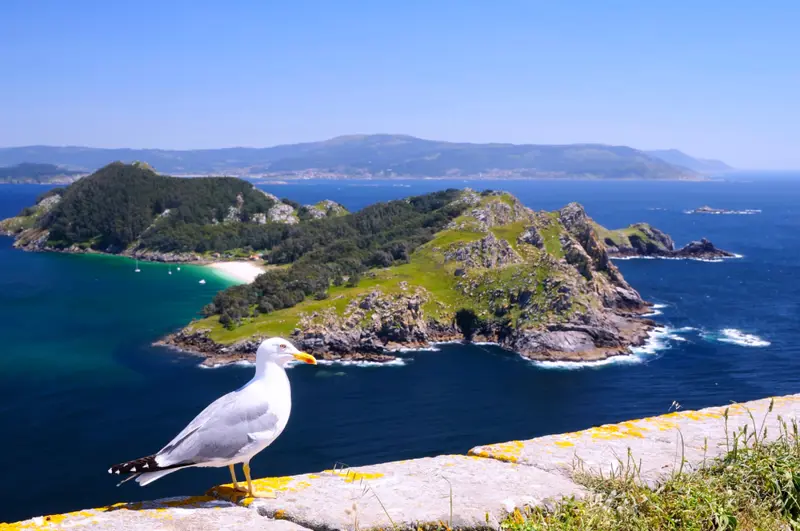 PARKS
PARKSThe city and surroundings offer some magnificent parks. These include the Atlantic Islands of Galicia National Park, which offers white sands and crystal-clear waters where you can walk, scuba dive, windsurf and even anchor your boat. You can also see the smallest dolphinsin the world. The small but elegant Alameda Park offers trees of magnolia and camelia. A curious place is the stone zoo, with statues by the sculptor José Luis Medina of animals foreign to Galicia, such as the hyena.
www.iatlanticas.es
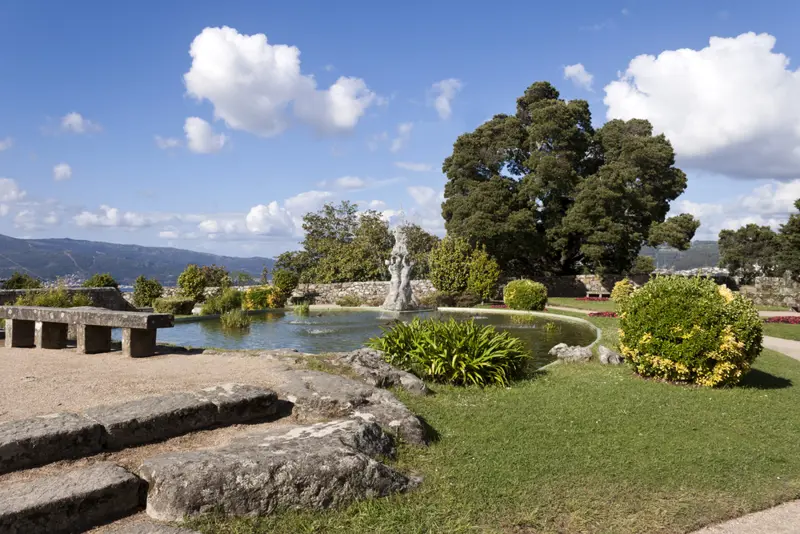 MOUNT CASTRO
MOUNT CASTROThis is found in the centre of Vigo and offers a wonderful view of the Estuary; it is also an archaeological site that provides an insight into the life of the inhabitants from the third to the first century BC, with well-preserved Celtic buildings. It also features “Las Anclas“, a monument made up of gigantic anchors that celebrates the famous naval battle of the Rande between the Anglo-Dutch and Franco-Spanish fleets in 1702. The name of the battle dear to the hearts of the people of Vigo is also seen in the Rande Bridge, one of the most important bridges over the sea in Spain with extraordinary views.
You might be interested in
Destinations found in the vicinity
Airports nearby Vigo


